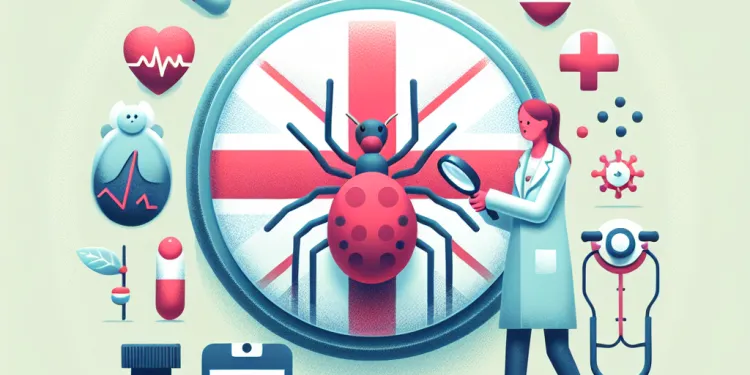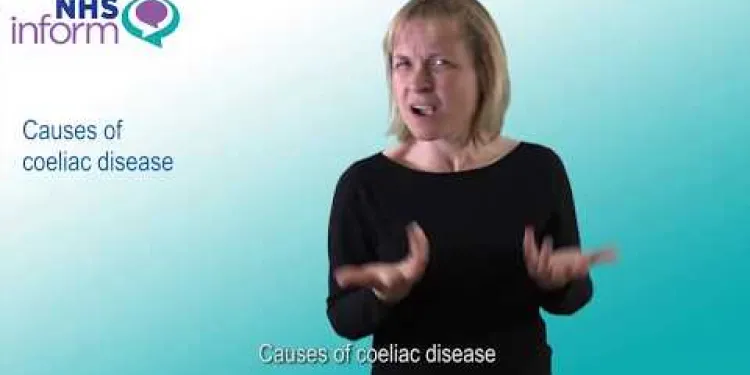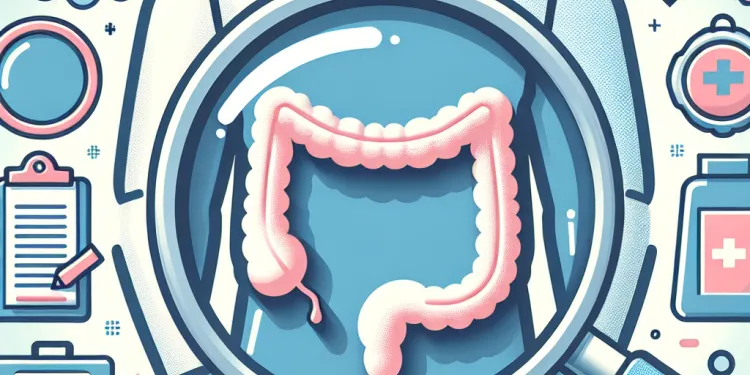
Find Help
More Items From Ergsy search
-

What is Lyme Disease?
Relevance: 100%
-

Lyme disease: What is it?
Relevance: 99%
-

Is there a vaccine for Lyme disease?
Relevance: 98%
-

Can Lyme disease be treated?
Relevance: 96%
-

How is Lyme disease transmitted?
Relevance: 95%
-

Is Lyme disease contagious between humans?
Relevance: 92%
-

Can pets get Lyme disease?
Relevance: 92%
-

What are common symptoms of Lyme disease?
Relevance: 92%
-

What is the first sign of Lyme disease?
Relevance: 90%
-

How do you prevent Lyme disease?
Relevance: 90%
-

Where is Lyme disease most commonly found?
Relevance: 89%
-

What happens if Lyme disease is left untreated?
Relevance: 89%
-

What tests are available for diagnosing Lyme disease?
Relevance: 89%
-

What kind of ticks carry Lyme disease?
Relevance: 88%
-

How effective are antibiotics in treating Lyme disease?
Relevance: 88%
-

Can you get Lyme disease more than once?
Relevance: 83%
-

What is post-treatment Lyme disease syndrome (PTLDS)?
Relevance: 80%
-

Can Lyme disease cause long-term health problems?
Relevance: 59%
-

What types of antibiotics are typically used to treat Lyme disease?
Relevance: 58%
-

How long does a tick need to be attached to transmit Lyme disease?
Relevance: 55%
-

Tick Bites: Should you be worried?
Relevance: 46%
-

Coeliac disease
Relevance: 34%
-

Coeliac Disease: Session 1: What is Coeliac Disease?
Relevance: 34%
-

Is Huntington's disease fatal?
Relevance: 33%
-

Liver disease | NHS
Relevance: 33%
-

Is Crohn's disease contagious?
Relevance: 33%
-

Causes of coeliac disease
Relevance: 33%
-

What is Huntington's disease?
Relevance: 33%
-

Is there a cure for Crohn's disease?
Relevance: 32%
-

What is Mitochondrial disease?
Relevance: 32%
-

What is Parkinson's disease?
Relevance: 32%
-

Symptoms of coeliac disease
Relevance: 32%
-

Do UK mosquitoes carry diseases?
Relevance: 32%
-

What is Alzheimer's disease?
Relevance: 32%
-

Do spiders in the UK carry diseases?
Relevance: 32%
-

What causes Crohn's disease?
Relevance: 31%
-

What causes Huntington's disease?
Relevance: 31%
-

How is Crohn's disease diagnosed?
Relevance: 31%
-

Can Huntington's disease be prevented?
Relevance: 31%
-

What is sickle cell disease?
Relevance: 31%
Understanding Lyme Disease
Lyme disease is an infectious disease caused by the bacterium Borrelia burgdorferi. It is transmitted to humans through the bite of infected black-legged ticks, also known as deer ticks. These ticks are commonly found in woodland and heath areas, which are prevalent across many regions, including parts of the UK. Lyme disease can affect various systems in the body, leading to a range of symptoms and health issues if not promptly treated.
Symptoms of Lyme Disease
One of the earliest and most recognizable symptoms of Lyme disease is a circular, red skin rash known as erythema migrans. This rash often resembles a bullseye pattern and typically appears around three to 30 days after a tick bite. However, it is important to note that not everyone with Lyme disease will develop this rash. Other early symptoms may include fever, chills, headache, fatigue, muscle aches, and swollen lymph nodes.
If left untreated, Lyme disease can progress to more severe symptoms such as neck stiffness, arthritis with severe joint pain, facial palsy, heart palpitations, and inflammation of the brain and spinal cord. It is crucial to seek medical attention if you suspect you have been bitten by a tick and are experiencing symptoms of Lyme disease.
Diagnosis and Treatment
Diagnosing Lyme disease can sometimes be challenging, as symptoms can mimic those of other conditions. In the UK, doctors typically rely on a patient’s history, symptoms, and laboratory tests to diagnose the disease. Blood tests can help detect antibodies to the Borrelia bacterium, but these tests may not always be conclusive in the early stages of the illness.
Treatment for Lyme disease usually involves a course of antibiotics, such as doxycycline or amoxicillin. Early intervention is crucial for a successful recovery, as prompt treatment can prevent the disease from progressing to a more severe stage. People with later stages of Lyme disease may require a more extended course of antibiotics or intravenous treatments.
Prevention and Awareness
Prevention is key in areas where Lyme disease is known to occur. When spending time in tick-prone areas, individuals should wear long sleeves and trousers, use insect repellent with DEET, and stay on clear paths, avoiding long grass and dense vegetation. After returning indoors, it is advised to perform a thorough tick check on oneself and on pets, as ticks can easily latch onto clothing or fur.
Raising awareness about Lyme disease is essential, as early detection significantly enhances treatment outcomes. Public health campaigns and educational programs in the UK aim to inform people about the risks, symptoms, and preventive measures associated with Lyme disease, helping to reduce the incidence and impact of this potentially debilitating illness.
What is Lyme Disease?
Lyme disease is an illness caused by a type of germ called Borrelia burgdorferi. You can get it from a tiny insect called a black-legged tick, often known as a deer tick. These ticks live in places with lots of trees and bushes, like woods and parks. Lyme disease can make different parts of your body feel unwell if not treated quickly.
Signs of Lyme Disease
One of the first signs you might notice is a red, round rash where you got bitten by the tick. This rash often looks like a bullseye and appears between three days and a month after the bite. But remember, not everyone gets a rash. You might also feel like you have the flu, with a fever, chills, headache, feeling very tired, sore muscles, and swollen neck glands.
If Lyme disease is not treated, it can get much worse. You might get a stiff neck, sore and swollen joints, a droopy face, fast or irregular heartbeats, and even swelling of the brain. It is very important to see a doctor if you think you’ve been bitten by a tick and feel sick.
How Doctors Check and Treat Lyme Disease
Doctors may find it tricky to know if you have Lyme disease because its signs are like other problems. In the UK, doctors look at your health history, your symptoms, and do lab tests to figure it out. They might test your blood to see if your body is fighting back against Lyme germs, but this might not work early on.
To treat Lyme disease, doctors usually give medicine called antibiotics, like doxycycline or amoxicillin, to help you get better. It’s very important to start treatment early to stop the disease from getting worse. If the disease is caught later, you might need stronger or longer treatments.
How to Stay Safe from Lyme Disease
It's best to prevent getting Lyme disease. When you go to places with ticks, wear long clothes and use bug spray with DEET. Stay on paths and avoid walking through tall grass. Check yourself and your pets for ticks after being outdoors, as ticks can cling to clothes and fur.
Learning more about Lyme disease is important. Knowing the signs early can help you get better faster. Health campaigns in the UK teach people about the risks, signs, and how to stay safe from Lyme disease. This helps reduce how many people get sick from the disease.
Frequently Asked Questions
What is Lyme disease?
Lyme disease is an infectious disease caused by the bacteria Borrelia burgdorferi, transmitted to humans through the bite of infected black-legged ticks.
What are common symptoms of Lyme disease?
Common symptoms include fever, headache, fatigue, and a characteristic skin rash called erythema migrans.
How is Lyme disease transmitted?
Lyme disease is transmitted to humans through the bite of infected ticks, particularly black-legged or deer ticks.
Can Lyme disease be treated?
Yes, most cases of Lyme disease can be treated successfully with antibiotics, especially if treatment is started early.
What happens if Lyme disease is left untreated?
If left untreated, Lyme disease can spread to the joints, heart, and nervous system, causing more severe symptoms.
What is the first sign of Lyme disease?
The first sign of Lyme disease is often a circular rash known as erythema migrans, which starts at the site of the tick bite.
Can you get Lyme disease more than once?
Yes, it is possible to get Lyme disease more than once since previous infection does not provide immunity.
Where is Lyme disease most commonly found?
Lyme disease is most commonly found in the Northeastern, Mid-Atlantic, and North-Central United States, as well as certain parts of Europe and Asia.
How do you prevent Lyme disease?
Preventive measures include using tick repellents, wearing protective clothing, checking for ticks after spending time outdoors, and removing ticks promptly.
What kind of ticks carry Lyme disease?
The primary vectors of Lyme disease are black-legged ticks, also known as deer ticks (Ixodes scapularis) and related species.
Is there a vaccine for Lyme disease?
Currently, there is no commercially available vaccine for Lyme disease for humans, although research is ongoing.
What should you do if you find a tick on your body?
Remove the tick as soon as possible using fine-tipped tweezers, pulling straight out without twisting. Clean the bite area and your hands with rubbing alcohol or soap and water.
How long does a tick need to be attached to transmit Lyme disease?
A tick typically needs to be attached for 36 to 48 hours or more to transmit Lyme disease.
Can Lyme disease cause long-term health problems?
Yes, if not treated promptly, Lyme disease can lead to long-term health problems, including chronic joint inflammation and neurological symptoms.
What tests are available for diagnosing Lyme disease?
Lyme disease is usually diagnosed based on symptoms, potential exposure to infected ticks, and blood tests, such as the ELISA and Western blot tests.
How effective are antibiotics in treating Lyme disease?
Antibiotics are highly effective in treating Lyme disease, particularly when administered early in the course of the illness.
What types of antibiotics are typically used to treat Lyme disease?
Common antibiotics used to treat Lyme disease include doxycycline, amoxicillin, and cefuroxime axetil.
Is Lyme disease contagious between humans?
No, Lyme disease is not contagious between humans; it is only transmitted through tick bites.
What is post-treatment Lyme disease syndrome (PTLDS)?
PTLDS refers to symptoms that persist after antibiotic treatment of Lyme disease, including fatigue, pain, and cognitive issues.
Can pets get Lyme disease?
Yes, pets, especially dogs, can contract Lyme disease from tick bites, and it is important to protect them with tick prevention measures.
What is Lyme disease?
Lyme disease is an illness. It comes from a tick bite. Ticks are tiny bugs. They live in grass and woods.
If a tick bites you, you might get Lyme disease. You can feel tired and your body can hurt.
To keep safe, wear long clothes in grassy places. Check your skin for ticks after being outside.
Use apps or pictures to learn more about Lyme disease and ticks. Ask an adult if you need help.
Lyme disease is an illness. Tiny germs called Borrelia burgdorferi cause it. You can get it if a black-legged tick, which carries these germs, bites you.
What are common signs of Lyme disease?
Lyme disease can make you feel unwell. Here are some signs to look for:
- Red, round rash on your skin
- Feeling very tired
- Headache
- Fever or feeling hot
- Hurting muscles or joints
Tools like drawing pictures or using apps can help you understand better.
Here are the common signs that show you might be sick:
- You might get a fever. This means your body feels hot.
- Your head might hurt. This is called a headache.
- You might feel very tired. This is called fatigue.
- You might see a special type of skin rash. It is called erythema migrans. It looks like a bullseye or a red circle.
If you feel unwell, tools like pictures of symptoms or simple charts can help you understand more. You can ask someone you trust for help too.
How do you get Lyme disease?
You can get Lyme disease from a tick bite.
Ticks are very small insects.
If a tick bites you, it might make you sick.
It's good to wear long sleeves and pants in the woods.
Check your skin for ticks after being outside.
A grown-up can help you check and take off any ticks.
Lyme disease is an illness people get from tick bites. Ticks are tiny creatures, like bugs. Black-legged ticks and deer ticks can carry the Lyme disease germ and make people sick.
Can Lyme disease be treated?
Yes, Lyme disease can be treated. Doctors can help with medicine to make people feel better. It is important to see a doctor if you think you have Lyme disease. Medicine works best when you start taking it early. If you have questions, talk to a doctor. They can explain what Lyme disease is and how the medicine helps.
Here are some tools that can help you:
- Ask a friend or family member to go with you to the doctor's office. They can help you remember what the doctor says.
- Use pictures and drawings to understand what Lyme disease is.
- Write down your questions before going to the doctor. This way, you won't forget to ask anything important.
Yes, you can usually make Lyme disease better with medicine. It works best if you take the medicine early.
What if Lyme disease is not treated?
If Lyme disease is not treated, it can make you very sick. You might feel more pain in your body.
These things might happen:
- You could have sore joints, like your knees.
- Your heart might not work well, making you feel tired or dizzy.
- Your nerves might not work right, which can make your face feel numb or make it hard to move.
If you think you have Lyme disease, it's important to see a doctor.
Some tools that can help you understand are:
- Pictures or charts to show what happens with Lyme disease.
- Talking to someone who can explain things clearly, like a doctor or a helper.
- Listening to information about Lyme disease instead of reading.
If you don't treat Lyme disease, it can get worse. It might start to hurt your joints, heart, and nervous system.
Here are some ways to help:
- Visit a doctor if you feel unwell.
- Take your medicine as the doctor says.
- Use a calendar or alarm to remind you to take your medicine.
- Ask a family member or friend for help if you need it.
What is the first sign of Lyme disease?
Lyme disease is an illness you can get from a tick bite. The first sign is often a red, round rash on your skin. This rash looks like a bull's eye, with a clear center and a red circle around it. The rash usually shows up 3 to 30 days after a tick bite.
If you see a rash like this or think you have Lyme disease, tell a grown-up or a doctor. They can help you feel better.
Support tools: You can use pictures or ask someone to help read difficult words.
The first sign of Lyme disease is often a round, red rash. This rash is called erythema migrans. It shows up where the tick bit you.
Can you get Lyme disease again?
Yes, you can get Lyme disease more than once. If you get bitten by different ticks, you can get sick again.
Here are some tips to help:
- Check for ticks after being outside.
- Wear long sleeves and pants in grassy areas.
- Use tick spray to keep ticks away.
- If you feel sick, tell a grown-up and see a doctor.
Yes, you can get Lyme disease again. Getting it once doesn't stop you from getting it another time.
Where do people get Lyme disease the most?
Lyme disease is more common in the Northeast, Mid-Atlantic, and North-Central areas of the United States. It is also found in some places in Europe and Asia.
How can you stop getting Lyme disease?
Lyme disease is an illness you can get from tick bites. Here are some easy steps to help you stay safe:
- Wear protective clothing: Put on long sleeves and pants. This keeps ticks away from your skin.
- Use tick repellent: Spray tick repellent on your clothes and skin. Look for sprays with DEET or another tick-fighting ingredient.
- Stick to clear paths: When walking outside, stay on clear paths. Avoid high grass and bushy areas where ticks live.
- Check your body: After being outdoors, look at your skin for any ticks. They like to hide in warm places, like behind your knees or near your hair.
- Shower soon after coming indoors: Taking a shower can help wash away ticks you can't see.
- Use tools: A mirror can help you check for ticks in hard-to-see places. Tweezers can help remove a tick if you find one.
Using these tips can help keep you safe from Lyme disease. Stay safe and enjoy the outdoors!
Here are ways to keep safe from ticks:
- Use spray to keep ticks away.
- Wear clothes that cover your skin.
- Check your body for ticks after playing outside.
- If you find a tick, take it off right away.
It helps to use a guide on how to remove ticks safely.
Which ticks can give you Lyme disease?
Lyme disease is spread by tiny bugs called black-legged ticks. People also call them deer ticks.
Is there a shot to stop Lyme disease?
Right now, there is no vaccine you can buy for Lyme disease for people. But scientists are working hard to make one.
What to Do If You Find a Tick on Your Body?
Here is what you can do if you see a tick on you:
1. Stay calm. Ticks are small bugs. You can take them off.
2. Get some tweezers. Tweezers are like little grippers.
3. Grab the tick close to your skin. Do not squeeze too hard.
4. Pull up slowly and straight. Do not twist or jerk.
5. Clean the bite area. Use soap and water.
6. Tell an adult. They can help you.
Tools to Help:
-Ask someone to read the steps with you.
-Use a timer to count 10 seconds when pulling the tick off.
-Have an adult nearby to help.
Take the tick off right away. Use thin tweezers to pull it straight out. Do not twist it. Clean the bite and your hands with rubbing alcohol or with soap and water.
How fast can a tick give Lyme disease?
A tick usually has to be stuck to you for 1 to 2 days to give you Lyme disease.
Can Lyme disease make you sick for a long time?
Yes, if you don't get treatment for Lyme disease quickly, it can cause long-term health problems. These problems can include joints that hurt for a long time and nerve problems.
What tests can tell if you have Lyme disease?
Doctors find out if you have Lyme disease by checking your symptoms. They also see if you might have been near ticks that carry the disease. Doctors can do blood tests called ELISA and Western blot to help find out.
Do antibiotics help with Lyme disease?
Antibiotics are medicines that help fight infections caused by bacteria. Lyme disease is an illness you can get from a tick bite. Antibiotics can help people get better from Lyme disease. If you think you have Lyme disease, it is important to see a doctor. They can give you the right medicine. Here are some tips to help you understand Lyme disease and antibiotics: - Ask your doctor questions if you don’t understand something. - Use a calendar to mark when to take your medicine. - Use apps or alarms as reminders to take your medicine on time. Always do what your doctor tells you and take all the medicine they give you.Antibiotics are very good at helping people get better from Lyme disease. They work best when you take them soon after you get sick.
What medicines help treat Lyme disease?
Doctors give special medicines called antibiotics to help treat Lyme disease. These medicines fight the germs that cause the disease.
For Lyme disease, doctors often use antibiotics like doxycycline, amoxicillin, or cefuroxime. Each person may need different medicine.
If you find reading this hard, ask someone to read it with you. You can also use tools that read text out loud on a computer or phone.
Doctors often give medicine to help people get better from Lyme disease. Some of these medicines are doxycycline, amoxicillin, and cefuroxime axetil.
Can people catch Lyme disease from each other?
No, people cannot catch Lyme disease from each other. You can only get it if a tick bites you.
What is post-treatment Lyme disease syndrome (PTLDS)?
Post-treatment Lyme disease syndrome (PTLDS) is when some people still feel sick, even after they have been treated for Lyme disease. Lyme disease is an illness caused by a tick bite.
Symptoms of PTLDS can include feeling tired, pain, and trouble thinking clearly. If you or someone you know has these problems after Lyme disease treatment, talk to a doctor.
It can help to rest, eat healthy foods, and stay active if you feel well enough. Writing down how you feel each day can also help you and your doctor understand your symptoms better.
PTLDS means feeling unwell even after taking medicine for Lyme disease. People may feel very tired, have aches and pains, and find it hard to think clearly.
Can pets get Lyme disease?
Yes, pets like dogs and cats can get Lyme disease. This disease comes from ticks. Ticks are tiny bugs that bite animals. It's important to check your pet for ticks after they play outside.
To keep pets safe, you can ask your vet about tick medicine. This medicine helps stop ticks from biting your pet.
If you think your pet is sick, tell an adult. They can take your pet to the vet.
Yes, pets like dogs can get sick with Lyme disease from tick bites. It is important to keep them safe by using ways to stop ticks.
Useful Links
- Ergsy carfully checks the information in the videos we provide here.
- Videos shown by Youtube after a video has completed, have NOT been reviewed by ERGSY.
- To view, click the arrow in centre of video.
- Most of the videos you find here will have subtitles and/or closed captions available.
- You may need to turn these on, and choose your preferred language.
- Go to the video you'd like to watch.
- If closed captions (CC) are available, settings will be visible on the bottom right of the video player.
- To turn on Captions, click settings .
- To turn off Captions, click settings again.
More Items From Ergsy search
-

What is Lyme Disease?
Relevance: 100%
-

Lyme disease: What is it?
Relevance: 99%
-

Is there a vaccine for Lyme disease?
Relevance: 98%
-

Can Lyme disease be treated?
Relevance: 96%
-

How is Lyme disease transmitted?
Relevance: 95%
-

Is Lyme disease contagious between humans?
Relevance: 92%
-

Can pets get Lyme disease?
Relevance: 92%
-

What are common symptoms of Lyme disease?
Relevance: 92%
-

What is the first sign of Lyme disease?
Relevance: 90%
-

How do you prevent Lyme disease?
Relevance: 90%
-

Where is Lyme disease most commonly found?
Relevance: 89%
-

What happens if Lyme disease is left untreated?
Relevance: 89%
-

What tests are available for diagnosing Lyme disease?
Relevance: 89%
-

What kind of ticks carry Lyme disease?
Relevance: 88%
-

How effective are antibiotics in treating Lyme disease?
Relevance: 88%
-

Can you get Lyme disease more than once?
Relevance: 83%
-

What is post-treatment Lyme disease syndrome (PTLDS)?
Relevance: 80%
-

Can Lyme disease cause long-term health problems?
Relevance: 59%
-

What types of antibiotics are typically used to treat Lyme disease?
Relevance: 58%
-

How long does a tick need to be attached to transmit Lyme disease?
Relevance: 55%
-

Tick Bites: Should you be worried?
Relevance: 46%
-

Coeliac disease
Relevance: 34%
-

Coeliac Disease: Session 1: What is Coeliac Disease?
Relevance: 34%
-

Is Huntington's disease fatal?
Relevance: 33%
-

Liver disease | NHS
Relevance: 33%
-

Is Crohn's disease contagious?
Relevance: 33%
-

Causes of coeliac disease
Relevance: 33%
-

What is Huntington's disease?
Relevance: 33%
-

Is there a cure for Crohn's disease?
Relevance: 32%
-

What is Mitochondrial disease?
Relevance: 32%
-

What is Parkinson's disease?
Relevance: 32%
-

Symptoms of coeliac disease
Relevance: 32%
-

Do UK mosquitoes carry diseases?
Relevance: 32%
-

What is Alzheimer's disease?
Relevance: 32%
-

Do spiders in the UK carry diseases?
Relevance: 32%
-

What causes Crohn's disease?
Relevance: 31%
-

What causes Huntington's disease?
Relevance: 31%
-

How is Crohn's disease diagnosed?
Relevance: 31%
-

Can Huntington's disease be prevented?
Relevance: 31%
-

What is sickle cell disease?
Relevance: 31%


